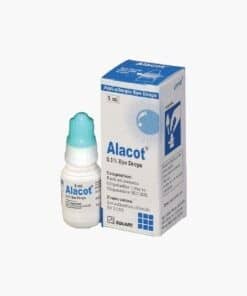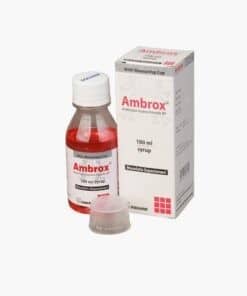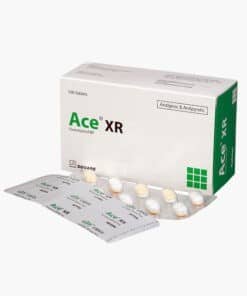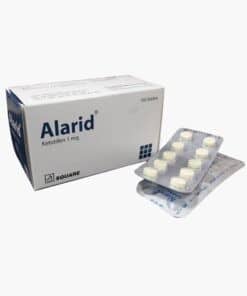Ipralin | Inhaler | 1 pcs
৳ 250.00
Brand Name: Ipralin Inhaler
Generic: Salbutamol + Ipratropium Bromide
(100 mcg+20 mcg)/puff
Manufacturer: Aristopharma Ltd.
200 metered doses: ৳ 250.00
Indications
Therapeutic Class
Pharmacology
Dosage & Administration
Inhaler puffs: 2 puffs 4 times a day. Patients may take additional puffs as required; however, the total number of puffs should not exceed 12 in 24 hours.
Inhaler solution: Inhalation solution in ampoule may be administered from a suitable nebuliser or an intermittent positive pressure ventilator.
Adults (including elderly): One ampoule as required for the relief of symptoms or as directed. Up to three to four ampoules daily.
Patients should be advised to consult a doctor or the nearest hospital immediately in the case of acute or rapidly worsening dyspnoea if additional inhalations do not produce an adequate improvement.
Interaction
Contraindications
Side Effects
Salbutamol: Mild tremor and headache have been rarely reported. These usually disappear with continuous treatment. There have been very rare reports of transient muscle cramp. Hypersensitivity reactions including angio-oedema, urticaria, bronchospasm, hypotension and collapse have been reported very rarely.
Ipratropium: Headache, pain, influenza, chest pain, nausea, bronchitis, dyspnea, coughing, pneumonia, and bronchospasm in lower part, and pharyngitis, sinusitis and rhinitis in the upper part have been reported.
Pregnancy & Lactation
Pregnancy Category C. There are no adequate and well-controlled studies of ipratropium bromide and salbutamol sulfate inhaler, ipratropium bromide or salbutamol sulfate, in pregnant women. this Inhaler should be used during pregnancy only if the potential benefit justifies the potential risk to the fetus.
lactation: It is not known whether the components of this Inhaler are excreted in human milk. this Inhaler should not be used by breastfeeding mothers, unless the expected benefit is thought to outweigh the risks.
Precautions & Warnings
Ipratropium bromide containing inhaler should be used with caution in patients with narrow-angle glaucoma, prostatic hyperplasia or bladder-neck obstruction. Salbutamol sulphate containing inhaler should be used with caution in patients with convulsive disorders, hyperthyroidism, or diabetes mellitus and in patients who are unusually responsive to sympathomimetic amines.
Beta-adrenergic agents may also produce significant hypokalemia in some patients (possibly through intracellular shunting) which has the potential to produce adverse cardiovascular effects. The decrease in serum potassium is usually transient, not requiring supplementation. Combination of Ipratropium and Salbutamol Inhaler has not been studied in patients with hepatic or renal insufficiency. It should be used with caution in those patient populations.
Use in Special Populations
Overdose Effects
The effects of overdosage are expected to be primarily related to Salbutamol because acute overdosage with Ipratropium Bromide is unlikely as it is not well absorbed systemically after inhalation or oral administration.
Symptoms: Manifestations of overdosage with Salbutamol may include tachycardia, anginal pain, hypertension, hypotension palpitations, tremor, widening of the pulse pressure, arrhythmia and flushing.
Therapy: Administration of sedatives, tranquillisers. In severe cases, intensive therapy. Beta-receptor blockers, preferably beta1- selective, are suitable as specific antidotes; however, a possible increase in bronchial obstruction must be taken into account and the dose should be adjusted carefully in patients suffering from bronchial asthma.
| Generic Name | Salbutamol + Ipratropium Bromide |
|---|---|
| Size | 200 metered |
Only logged in customers who have purchased this product may leave a review.












Reviews
There are no reviews yet.